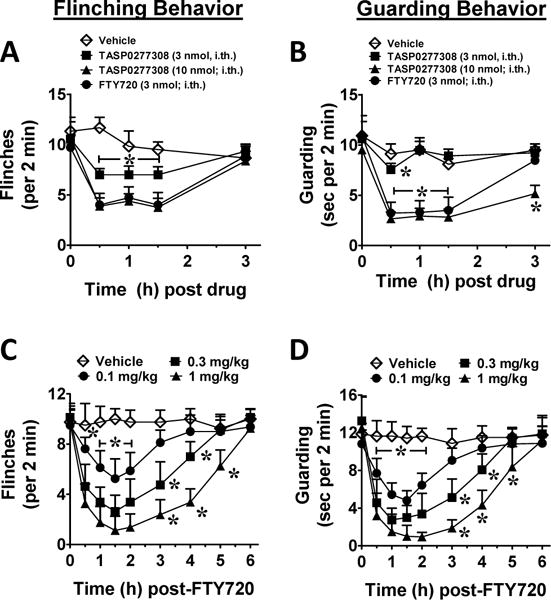Figure 3.

S1PR1 antagonists attenuate spontaneous flinching and guarding CIBP behaviors. Mice were evaluated on day 11 when they displayed ≥5 flinches and ≥10 seconds guarding over a 2-minute period. Treatment was administered at t=0 and mice were tested until the effect resolved. (A) When compared to vehicle (3% DMSO control; ◊; n=6), intrathecal administration of TASP0277308 (3 nmol; ■; n=9 or 10 nmol; ▲; n=8) or FTY720 (3 nmol; ● n=7) attenuated CIBP-induced flinching. (B) Likewise, guarding behaviors were attenuated with intrathecal administration of TASP0277308 (3 nmol; ■; n=9 or 10 nmol; ▲; n=8) or FTY720 (3 nmol; ●; n=7) when compared to vehicle (◊; n=4). Dose-response flinching (C) and guarding (D) behaviors to intraperitoneal FTY720 (0.1, ●; 0.3, ■; or 1.0 mg/kg, ▲; n=8) compared to vehicle (◊; n=4). Data are expressed as mean ± SEM for (n) animals and analyzed by two-tailed two-way ANOVA with Bonferroni comparisons. *P <0.05 vs. t=0h.
